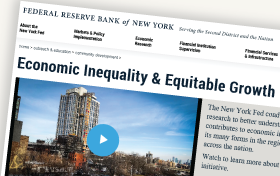With Abundant Reserves, Do Banks Adjust Reserve Balances to Accommodate Payment Flows?

As a result of the global financial crisis (GFC), the Federal Reserve switched from a regime of scarce reserves to one of abundant reserves. In this post, we explore how banks’ day-to-day management of reserve balances with respect to payment flows changed with this regime switch. We find that bank behavior did not change on average; under both regimes, banks increased their opening balances when they expected higher outgoing payments and, similarly, decreased these balances with expected higher incoming payments. There are substantial differences across banks, however. At the introduction of the abundant-reserves regime, small domestic banks no longer adjusted balances alongside changes in outgoing payments.
Will the Federal Reserve’s Asset Purchases Lead to Higher Inflation?
A common refrain among critics of the Federal Reserve’s large-scale asset purchases (“LSAPs”) of Treasury securities is that the Fed is simply printing money to purchase the assets, and that this money growth will lead to much higher inflation. Are those charges accurate? In this post, I explain that the Fed’s asset purchases do not necessarily lead to higher money growth, and that the Fed’s ability (since 2008) to pay interest on banks’ reserves provides a critical new tool to constrain future money growth. With this innovation, an increase in bank reserves no longer mechanically triggers a series of responses that could lead to excessive money growth and higher inflation.














 RSS Feed
RSS Feed Follow Liberty Street Economics
Follow Liberty Street Economics